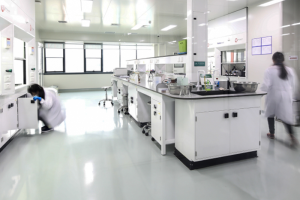Hospitals increase energy-efficiency, cut emissions with CHP

The Environmental Protection Agency (EPA) recently recognized two New York City hospitals and a power plant serving several Boston health care facilities for utilizing highly efficient and environmentally friendly combined heat and power (CHP) systems.
Energy Star CHP Award winners include Montefiore Medical Center and New York-Presbyterian/Weill Cornell Medical Center, both in New York City. EPA also recognized Medical Area Total Energy Plant (MATEP), which serves several hospital, teaching and research facilities in Boston.
"These institutions are protecting their critical operations from power outages and protecting our climate from harmful carbon pollution with reliable and more efficient CHP systems," says Gina McCarthy, assistant administrator for EPA's Office of Air and Radiation.
CHP systems, also known as cogeneration, capture waste heat from electricity generation, and use the heat to generate steam or hot water for both cooling and heating. A single energy source such as natural gas commonly is used in the system.
MATEP's 46-megawatt CHP system produces steam, chilled water and electricity for the Longwood Medical and Academic Area (LMA). Located in Boston, the 200-acre LMA is home to Boston Children's Hospital, Brigham and Women's Hospital and several other health care facilities.
Two natural gas-fired combustion turbines equipped with heat recovery steam generators power the CHP system, producing up to 360,000 pounds of steam per hour and 24 megawatts of electricity. The steam drives turbines to generate an additional 22 megawatts of electricity and also to heat water for space heating and other uses. Several chillers use part of the steam output to produce chilled water for space cooling.
With an operating efficiency of 75 percent, MATEP's CHP system requires approximately 24 percent less fuel than using electricity from the grid and producing steam with a boiler. The system prevents an estimated 117,500 tons of carbon dioxide emissions annually.
Employing a network of five internal combustion engines and one combustion turbine, Montefiore's CHP system generates up to 11 megawatts of electricity and produces up to 27,000 pounds of steam per hour utilizing otherwise wasted heat. ]
The steam is used to meet more than 95 percent of the medical center's thermal energy demands, including hot water, space heating and cooling.
With an operating efficiency of 69 percent, Montefiore's CHP system requires approximately 26 percent less fuel than using electricity from the grid and producing boiler steam. The system prevents an estimated 17,900 tons of carbon dioxide emissions per year.
Using a natural gas-fired combustion turbine and heat-recovery steam generator, the CHP system at New York-Presbyterian/Weill Cornell Medical Center generates up to 7.5 megawatts of electricity and produces up to 70,000 pounds of steam per hour.
With an operating efficiency of 72 percent, the system requires approximately 27 percent less fuel than using electricity from the grid and producing boiler steam. The system also prevents an estimated 21,500 tons of carbon dioxide emissions from entering the atmosphere per year.
For more information on the program, log on to www.epa.gov/chp.




